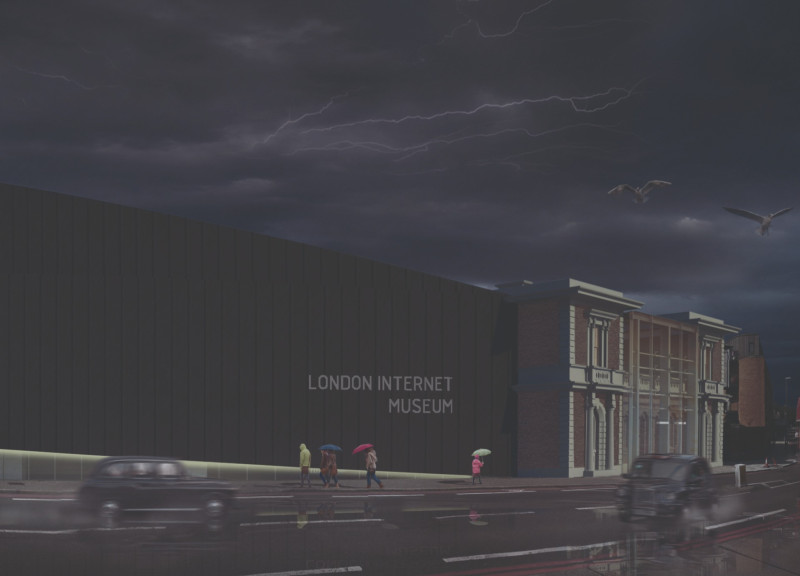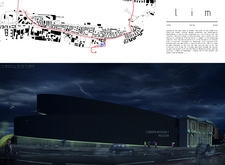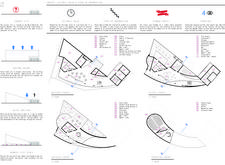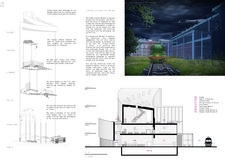5 key facts about this project
## Overview
The architectural design for the London Internet Museum is located in North Woolwich, United Kingdom, adjacent to the historically significant Old Station Museum. The facility is intended to serve as an educational center that highlights the history, technology, and societal effects of the internet, merging modern architectural practices with the heritage of the site to provide an engaging space for learning and interaction.
## Conceptual Framework
The design philosophy centers around a relationship between the past, present, and future of internet technology. This approach respects the site's historical value while exploring contrasts through architectural articulation and material choices. The concept incorporates a narrative of technological progression, relating to influential figures in internet history, and utilizes motifs such as "ribbon cables" to symbolize connectivity. These elements influence both the building's façade and the internal organization of spaces, promoting flexibility and accessibility.
## Materiality and Spatial Configuration
The material palette combines modern and traditional elements, featuring steel for structural strength, large glass expanses for transparency and natural light, and brick to honor the historical context. The design's exterior includes a curved façade that adapts to the site’s topography, fostering a dynamic silhouette. The entry foyer serves as the main circulation hub, guiding visitors to varied thematic zones, including flexible exhibition halls and a multi-functional library that encourages collaboration. The layout promotes social interaction with open plan designs and community spaces that facilitate engagement among visitors and technology enthusiasts.






















































